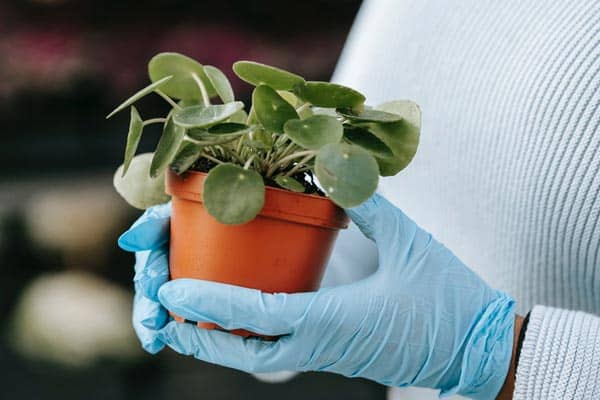How to Get Rid of Gnats – Five Ways
Gnats are smaller flying insects that include fruit flies, fungus gnats, and drain flies.
Fungus gnats are dark and have longer legs; fruit flies are small, brown, and round; and drain flies have moth-like wings that love to be around water. Gnats are usually seen in swarms since they breed frequently.
How to Get Rid of Gnats
You can get rid of gnats in the house by using a gnat trap, food-grade diatomaceous earth, flypaper ribbons, apple cider vinegar, dish soap, red wine, bleach, and a host of other homemade mixtures. It’s a good idea to try and cycle through several different methods if the first few don’t work well for you. One will help you get rid of your gnats.
If you have a gnat infestation, this is for you. We’re going to touch on all of these treatment methods and more, and you can try them out, find out common gnat species, and how to remove gnats for specific rooms in your home.
Understanding What a Gnat Is
Not all gnats are bad since some will devour aphids or pests that damage your food crops or ornamental crops, and others pollinate plants. Currently, there are four flyings, tiny species people commonly call gnats.
- Drain Flies – You’ll usually find these tiny bugs around sewers, drains, septic tanks, or areas where you had a sewage leak.
- Fruit Flies – Fruit flies are gnats that are attracted to fresh or rotting fruits and vegetables, liquids like vinegar, wine, or soft drinks, and moist organic materials.
- Fungus Gnats – You’ll find these gnats hanging around your overwatered houseplants when the excess water causes the organic matter in the soil to start to decay. Adult gnats can annoy you, but the larvae can easily feed on plant roots and cause the leaves to turn yellow and wilt or die. They can also spread a pathogen that is a direct cause for a condition called damping-off, where plant seeds die before they sprout.
- Phorid Flies – Just like drain flies, these gnats will swarm around drains, garbage, and rotting vegetables and fruits.
Why Gnats Enter the House
Gnats love to swarm in musty, warm environments. Additionally, the presence of plants, stagnant water, and over-ripe fruits also attract them in droves.
- Decomposing Organic Matter – Sewage and wastes from faulty pipes or drains can cause waste to accumulate in the drains or soil, and these are gnat breeding grounds.
- Moist Organic Matter – Moth flies and fruit flies are attracted to fruits, moist organic matter, and vegetables. You’ll commonly see them swarm around vegetables and fruits if you leave them uncovered.
- Moist Soil –Moist soil is the perfect habit for fungus gnats.
What You Can Do About Gnats
You’ll find these tiny insects swarming around damp soil in your potted plants or near over-ripe and bruised fruit in your kitchen.
They can hover around your sink because they get drawn to the decomposing food in the garbage disposal, or they could be around light fixtures outside on your patio or porch.
Fortunately for you, gnats don’t damage your home, but some can have health risks. All gnats can bite, but not every species has mouthparts that can make it through the skin.
Those that can bite and pierce the skin can transmit diseases or pathogens, and their bites can cause swelling, irritation, and itching redness. You could end up going to the doctor for your symptoms.
Five Popular Ways to Get Rid of Gnats in the House
Since gnats reproduce in cycles, their population can quickly increase, so you might need to use more than one method to get them all. Try these five natural options before you grab an insecticide or pesticide.
1. Gnat Trap
Gnats will get drawn to the color yellow, so this means that you can trap them on special yellow cards that come covered with a sticky adhesive.
For the best results at getting rid of the gnats, get two small cards or cut larger cards into smaller squares.
Lay them in your potted plant’s soil or attach them to skewers or twigs and stick them into your pots. Once you fill the large traps with gnats, discard and replace them.
2. Food-Grade Diatomaceous Earth
Better known as DE, this is an abrasive, organic powder that you can buy and sprinkle over the plant’s soil to trap the gnats and kill them of dehydration. Don’t apply it after you water the soil because it won’t work.
To make sure the DE stays dry after you apply it, you may want to put a layer of sand between it and the potting soil and work on watering your plants from the bottom.
3. Flypaper Ribbons
This is a very sticky ribbon that will catch gnats, but you have to place them carefully around your home.
They’ll grab anything that brushes by them, including hair, curtains, and furniture, to create a mess. Don’t use flypaper ribbons outside because they can trap and kill beneficial insects or creatures.
4. Apple Cider Vinegar and Water
Fill a very shallow saucer with a mixture of a few drops of dish soap, one part water, and one part apple cider vinegar.
Put it near any affected area in your home. The gnats will fall into the liquid, and the soap will prevent them from getting back out. Add fresh water and vinegar as needed until the gnats vanish.
5. Drench the Soil
Bacillus thuringiensis is a bacterium that appears in your potting soil, and Br. var. Israelensis will kill fungus gnat larvae. Follow the package instructions to make a Bti drench and soak the plants’ soil.
It’ll coat the plant’s roots without hurting them and kill any present fungus gnat larvae that decide to feed on them.
Once you get rid of the gnats, you should allow your houseplants to dry out between watering sessions to help discourage the adult gnats from returning and laying more eggs.
If there are gnats hovering around your pots’ drainage holes, place small fabric pieces over the holes while making sure the excess water drains out.
Finally, remember to refrigerate your vegetables and fruits while throwing away bruised or decaying foods in outdoor containers.
How to Get Rid of Gnats Outside
If you don’t want to saturate your outdoor plants, you can always drop a mosquito dunk around that is labeled as being safe for use around wildlife or pets in a bucket or watering can.
Allow it to sit for a few hours to overnight to allow the dunk to soften and release the insect-killing bacteria.
Then, remove the dunk, save it, and water your plants. Repeat this process for several weeks to kill gnat larvae in the soil.
You shouldn’t use electric pest traps for gnats because they usually end up killing beneficial insects with the pests, but traps that use ultraviolet light to attract the gnats work well.
However, they only work to trap adults so the larvae can grow into adults and reproduce to start the cycle again.
Some gnats like to swarm around outdoor lights or porch lights and sneak inside to hover around your lamps or television. To discourage this behavior, you should switch to yellow bug lights, low-voltage bulbs, or keep the lights by the windows or doors off.
Some companies will add a pheromone to attract the gnats to the light traps, and this can work well for large amounts of gnats.
If you end up with bites and you can’t find out what is biting you, it could be tiny, biting midges or sand gnats.
You can avoid them by staying indoors on overcast, damp days when the air isn’t moving, or try to cover up as much as you possibly can when you’re outside.
Removing Gnats from Your Kitchen
If you have a few pesky gnats hanging around the fruit basket in your kitchen, you can get rid of them by getting apple cider vinegar, dish soap, sugar, water, and a container.
Mix around two tablespoons of vinegar into one liter of water before you add a tablespoon of sugar and a few drops of dish soap. Stir everything together and put the container by the fruit.
The insects will come to the area because of the scent, get stuck in the soap in the solution, and drown.
Removing Gnats from Your Dining Room
The next time you’re enjoying a glass of red wine at dinner and notice a gnat or two around set out an extra glass. Gnats love fermented, sugary beverages so that you can lure them in with them.
All you have to do is pour a small amount of your favorite wine into a glass, add a few drops of liquid soap, and set it out. The gnats will fly in to get the wine, get stuck due to the soap, and drown.
Removing Gnats from Your Bathroom
It can be very aggravating to have gnats constantly swarming above the tub drain or around the sink in your bathroom, and wine or apple cider vinegar isn’t usually enough to handle the problem.
If you notice some hovering around these areas, dilute a little bleach in water at a ratio of a half-cup of bleach to a gallon of water before pouring it down the drain.
Repeat as needed until you can’t see any gnats, and make sure to wear protective gloves and eyewear.
Removing Gnats from Your Pantry
Because rotting fruit attracts gnats, you can use it to trap and get rid of them. If you have an overripe or rotten banana, mash it up into a container like a mason jar, get a plastic wrap and put it over the top, and puncture the plastic with a series of holes.
Gnats can wiggle through the holes to get to the fruit, but the transparency of the plastic wrap doesn’t allow them to get back out.
Removing Gnats from Your Living Room
If you only have a few gnats floating around the room, you can get rid of them by filling a spray bottle with a mixture of a tablespoon of vinegar, a cup of water, and a few drops of dish soap.
The next time you see the gnats, give them a spray with this mixture. It’s also safe to use around your kids, plants, and pets.
Bottom Line
Gnats can be a very frustrating problem to try and deal with, especially if they just keep cycling back.
The methods we outlined can help you get rid of the problem once and for all while taking your house back.






